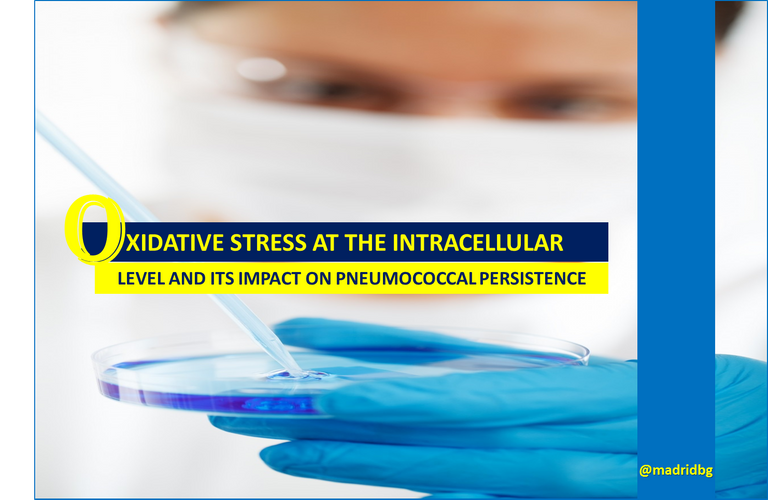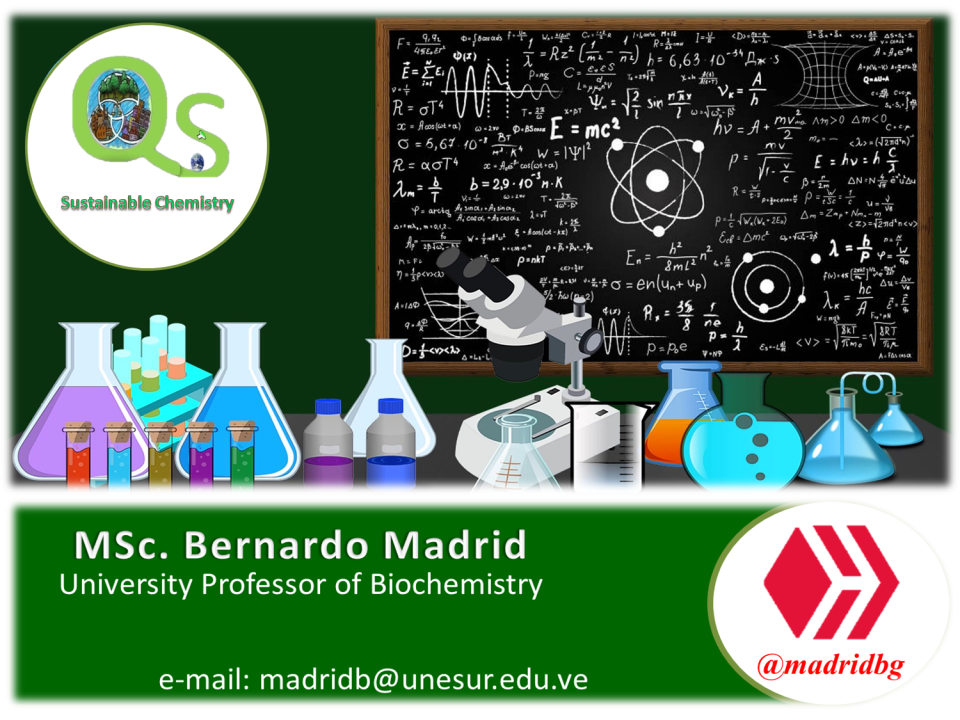Greetings and welcome dear users, after passing certain complications at the level of this outreach space, we return with the scientific approach and this time we will be sharing the different mechanisms that have been adapting the bacteria associated with pneumococcus and its persistence with the use of antibiotics. So it will be a content that we will be socializing through the #Stemsocial community where scientific advances in different areas of knowledge are promoted.

Image courtesy of: PublicDomainPictures
In this sense, it is necessary to understand that the Streptococcus pneumoniae bacterium is one of the most common in the infectious pathology of human beings, it is characterized as a pathogenic microorganism capable of affecting human health in different dimensions, since it produces multiple infections as well as severe invasive processes.
So that at microbiological level we are talking about a Gram-positive bacterium whose size varies between 1.2 and 1.8 micrometers in length, it has an oval shape with distal ends lanceolate, hence it is associated with infections such as pneumonia, peritonitis, sinusitis and much more severe complications such as meningitis and sepsis.
Based on the above, we can establish that this bacterial pathogen is one of the main causes of respiratory infections, both upper and lower respiratory tract, and together with viruses, are the main responsible for respiratory problems in children.
Although it is true that pneumococcus, as a pathogen, was considered highly sensitive to a large number of antimicrobials, including penicillin as the antibiotic of first choice to eradicate the pathogen from the human system, so that treatment to deal with it was considered to be easily applicable and presented few difficulties in their clinical management. However, recent studies have shown that this is not so true, since the pathogen itself has managed to adapt and develop marked persistence to some antimicrobials, which has raised alarms at the microbiological level in terms of attacking the diseases caused by it.

Micrograph of Streptococcus pneumoniae: CDC/Janice Carr
Consequently, if we make a historical review we realize that in a certain way the persistence of pneumococcus on penicillin was already occurring since 1960, although persistence was somewhat rare by then since the strains did not present any clinical complications, however, the species apparently improved its defense mechanism and by 1977, the first endemic outbreaks caused by the resistance of the pathogen against penicillin began to occur in the African continent.
However, beyond the above, no clear mechanism was known about the behavior of persistence, so that recently it has been described for the first time the mechanisms that the pneumococcus has developed to cope with antibiotics and all part of a process or oxidative stress at intracellular level that is responsible in some way to induce tolerance of subpopulations of this bacterium to treatment based on concentrations of fluoroquinolones.
And even more knowing that despite the different pre-existing vaccines, infections associated with this pathogen are responsible for more than one million deaths per year worldwide, hence this hard statistic makes pneumococcus one of the pathogens that cause more deaths, among all those that produce infectious diseases that are preventable through vaccines.
Hence, the effectiveness of treatment based on antibiotics that are currently known is somewhat compromised, as a result of the persistence and tolerance that has managed to develop the different strains of the bacterial species, in the presence of certain pharmacological treatments.

Culture of S. pneumoniae on blood agar: Gsbhalla
In this sense, a group of researchers associated with the Center for Research in Clinical Biochemistry and Immunology of Argentina, have been developing a research process where it is demonstrated from cellular models and experimental trials, how the exposure to oxidative stress at intracellular level, leads small populations of pneumococcus to develop a persistence mechanism to treatment specifically with fluoroquinolones.
From the above, it is necessary to understand that when we talk about persistence, we are referring to the degree of tolerance that the pathogen has to high concentrations of antibiotics and this adaptation process is acquired through different environmental factors through which the bacterial species has passed, so that under this adaptations there are no modifications at the genome level of the same, in other words, there are no mutations.
Consequently, understanding the active and metabolic process exerted by the bacterial species allows us to know how its persistence develops, which in turn is clinically relevant, since it could be in the presence of causing considerable failures in those therapies based on antibiotics and which have been designed to attack various diseases. Hence, the difference between persistence and resistance is not much, since the former clinically precedes the latter, and if it is not addressed, we will be generating an immunological resistance to antibiotic treatment.

Amphoteric character of quinolones: Lehpares
In this sense, it is necessary to know that at the microbiological level, pneumococcus mainly develops in the extracellular environment, that is to say that it has the capacity to remain inside the cell, specifically within the immune system of the pneumosites, cells specialized in the formation of the pulmonary alveoli.
Hence, according to the above, it is enough to determine that when a bacterium enters a cell, the immune system is automatically activated, so that macrophages and neutrophils are activated and generate a great oxidative stress, a process that is evidenced by the release of large amounts of hydrogen peroxide and different reactive forms of oxygen as a mechanism to eliminate the infection.
In this sense and in the opinion of the researcher Echenique, beyond the fact that most of the pneumococcus bacteria die when attacked by hydrogen peroxide, we have been able to establish that there is a subpopulation of this one that manages to survive as a consequence of the enzymatic development that has managed to establish and that allow to completely degrade the hydrogen peroxide produced during the oxidative stress at intracellular level, allowing the bacterial group to survive throughout the process just when they enter the human cell, which represents a great mechanism of sophistication for a process that normally is extracellular.
In this sense and in chemical terms, fluoroquinolones are a group of antibiotics used to treat infectious processes produced by pneumococcus, in which it presents a mechanism of action linked to the increase of oxidative stress levels and as we have already explained the bacteria has developed a kind of defense mechanism to survive in the presence of the respective peroxide, hence the persistence that it presents, so that the efficacy of the drug is highly reduced.
Thus, in order to evaluate the incidence of oxidative stress, the researchers subjected the bacterial strains to culture media with controlled amounts of hydrogen peroxide, and in conditions similar to those that could be exposed inside a cell of the immune system.

Image courtesy of: Konstantin Kolosov
Thus, within the respective observations, it has been possible to determine that the bacterium increases its quantity when it is exposed to fluoroquinolones, which generates a kind of over-life before the antibiotic in question. Consequently, it is a result that demonstrates the type of tolerance that the pneumococcus has managed to develop.
However, this does not mean that the tolerance created generates resistance, since for this to occur it is necessary for mutations to appear in the genome of the species, with the incorporation of new genes.
Thus, although the study has not ceased to be important, it only demonstrates the mechanism of persistence to the antibiotic, which is important at the clinical level, but it is only an indication that the efficiency of the antimicrobial treatment of patients with pneumococcus-associated infections has been reduced and consequently the peroxide levels must be reduced so that the sensitivity of the bacteria increases and reacts in the best way to the pharmacological treatment.
BIBLIOGRAPHY CONSULTED
[1] Fe Tubau, Josefina Liñares, Rogelio Martín ANTIBIOTIC RESISTANCE IN Streptococcus pneumoniae pneumoniae.Artículo: Acceso Online
[2] F. del Castillo Martín
Penicillin-resistant pneumococcus. A serious public health.Artículo: Acceso Online
OF INTEREST
2. For more information related to the areas of science, technology, engineering and mathematics, do not hesitate to visit #stemsocial and #stem-espanol, they are communities that promote scientific advances in these areas
